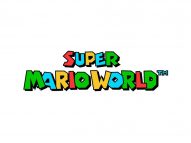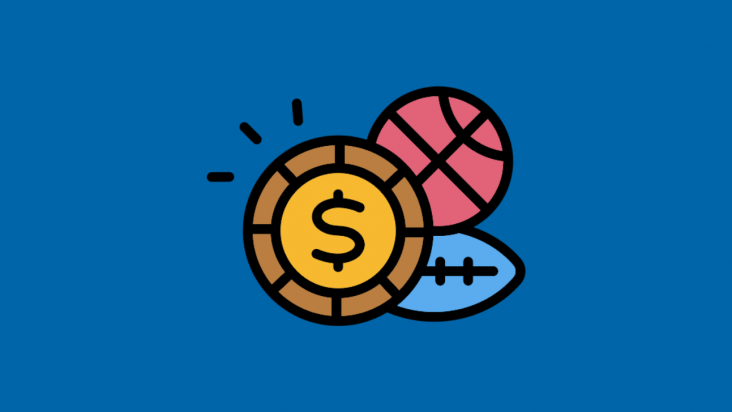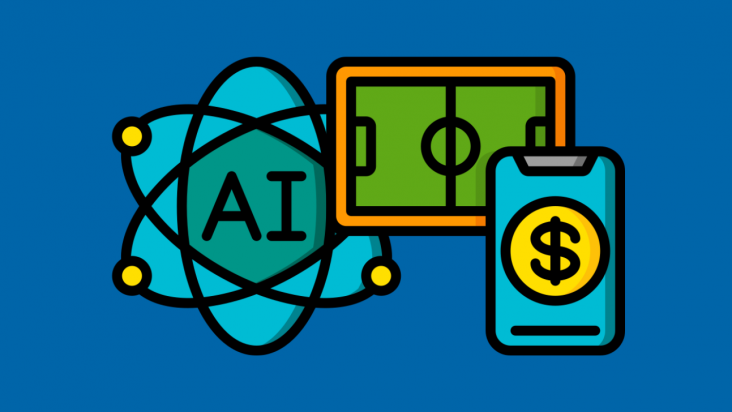![Best Selling RPGs: Ultimate List Ranked by Revenue [2024] Best Selling RPGs: Ultimate List Ranked by Revenue [2024]](https://data40.com/wp-content/uploads/2024/03/twitter-4.jpg)
The Mario franchise has been a cornerstone of the video gaming world since its inception in the 1980s. It has not only captivated millions of players around the globe but has also set unprecedented standards in the gaming industry. This article dives into the best-selling Mario games of all time, ranked by their revenue, to celebrate this iconic character’s journey.
| Rank | Name | Genre | Developer | Publisher | Platform | Release Date | Sales |
|---|---|---|---|---|---|---|---|
| #1 |  | Kart Racing | Nintendo EAD | Nintendo | Nintendo Switch | April 28, 2017 | 60.58 |
| #2 |  | Platformer | Nintendo EAD | Nintendo | NES | September 13, 1985 | 40.24 |
| #3 |  | Platformer | Nintendo EAD | Nintendo | Nintendo DS | May 15, 2006 | 30.72 |
| #4 |  | Platformer | Nintendo EAD | Nintendo | Nintendo Switch | October 27, 2017 | 27.65 |
| #5 |  | Platformer | Nintendo EAD | Nintendo | SNES | November 21, 1990 | 20.61 |
| #6 |  Super Mario Land Super Mario Land | Platformer | Nintendo EAD | Nintendo | Game Boy | April 21, 1989 | 18 |
| #7 |  | platformer | Nintendo | Nintendo | NES | October 23, 1988 | 17 |
| #8 |  | platformer | Nintendo EAD Tokyo | Nintendo | Wii | November 1 , 2007 | 12 |
| #9 |  | Jump ’n’ Run | Nintendo EAD | Nintendo | Nintendo 64 | June 23, 1996 | 11 |
| #10 |  | Platform | Nintendo EAD Tokyo | Nintendo | Nintendo Switch | November 21, 2013 | 9 |
Evolution of Mario Games
From 8-Bit to 3D:
The transition from the 8-bit graphics of the original “Super Mario Bros.” to the immersive 3D worlds of “Super Mario 64” was nothing short of revolutionary. This leap was not merely a technical upgrade in visual presentation but also a complete overhaul in gameplay dynamics. The original “Super Mario Bros.” laid the groundwork with its side-scrolling format, introducing players to the Mushroom Kingdom, and setting the stage for the platforming genre. The game’s success was built on intuitive controls, imaginative level designs, and the introduction of iconic characters and power-ups that have become synonymous with the Mario brand.
With the advent of the Nintendo 64, “Super Mario 64” brought Mario into a fully realized 3D world for the first time. This was a monumental shift in how players interacted with the game, offering freedom of movement and exploration that was previously unimaginable. The game’s use of analog control for precision movement, combined with its innovative camera system, set a new standard for 3D platforming games.
The Impact of Innovation:
Each new installment in the Mario series has been marked by significant innovations that have contributed to the franchise’s enduring popularity. “Super Mario World” introduced players to Yoshi, Mario’s dinosaur companion, adding a new layer of gameplay with Yoshi’s unique abilities. This addition expanded the series’ lore and provided fresh gameplay mechanics, making “Super Mario World” a critical and commercial success.
In “Super Mario Galaxy,” the series took another bold step, this time into the realm of space, introducing gravity-defying gameplay that challenged players’ perceptions and strategies. The game’s inventive use of spherical worlds and gravity mechanics showcased Nintendo’s ability to reinvent the franchise while maintaining the core elements that fans love.
The Role of Promotion and the Key to Success:
The success of Mario games can also be attributed to Nintendo’s strategic promotion and marketing efforts. Each major release is accompanied by comprehensive marketing campaigns that highlight the game’s innovations and the joy of playing Mario games. From memorable television commercials and partnerships to engaging social media campaigns, Nintendo has mastered the art of creating anticipation and excitement around each new Mario game.
Moreover, the company’s approach to promoting a sense of community and shared experience, particularly through multiplayer and co-op gameplay features, has played a significant role in the franchise’s success. Games like “New Super Mario Bros. Wii” and “Super Mario Party” emphasize playing together, making Mario games a staple in social gatherings and family entertainment.
The evolution of Mario games from 8-bit to 3D is a journey through the history of video gaming itself. Each game in the series not only showcases advancements in technology but also Nintendo’s unwavering dedication to delivering fun, innovative, and high-quality gaming experiences. Through clever promotion, a deep understanding of its audience, and a commitment to innovation, the Mario franchise continues to captivate players around the world, maintaining its position as a cornerstone of the gaming industry.
Best-Selling Mario Games
While revenue is a primary factor, the cultural impact and critical acclaim of each game also play crucial roles in their ranking.
Mario Kart 8 Deluxe

- Copies Sold: Over 45 million by 2024
- Release Date: April 2017
Plot: Mario Kart 8 Deluxe does not have a traditional plot, as it is primarily a racing game. Players choose characters from the Mario universe to compete in races or battles on various themed tracks and arenas.
Reasons for Success:
- Multiplayer Experience: The game’s ability to offer both local and online multiplayer modes has made it a favorite for casual gaming sessions and parties. The accessibility of the game for players of all skill levels, combined with competitive elements for more serious gamers, has broadened its appeal.
- Enhanced Visuals and Performance: On the Nintendo Switch, Mario Kart 8 Deluxe boasts improved graphics and smoother performance compared to its Wii U predecessor. This enhancement in visual and gameplay experience has attracted a wider audience.
- Expanded Content: This deluxe edition includes all the downloadable content from the original Mario Kart 8, adding more value with additional tracks, characters, and vehicles. The introduction of the revamped Battle Mode has been particularly well-received.
- Switch’s Portability: The Nintendo Switch’s hybrid nature, allowing for both portable and console play, has contributed significantly to the game’s success. Players appreciate the flexibility to play on-the-go or in a traditional home gaming setup.
Popularity Factors:
- Mario Kart 8 Deluxe’s popularity is further bolstered by the Nintendo Switch’s success, as it serves as a go-to game for new console owners. The game’s family-friendly content, combined with competitive elements, ensures it remains a staple in gaming libraries.
New Features and Player Attraction:
- New features like the Smart Steering option make the game accessible to players of all skill levels, while the addition of characters like the Inklings from Splatoon and tracks from various Nintendo franchises keeps the gameplay fresh and exciting. The inclusion of all DLC content from the original game, along with exclusive new items like the Feather and Boo, adds value and variety, drawing players back for more racing fun.
Super Mario Bros.

- Copies Sold: 40.24 million
- Release Date: September 1985
Game Plot: Super Mario Bros. sets players on a quest as Mario (or Luigi in multiplayer mode) to rescue Princess Toadstool from the clutches of the villainous Bowser. The journey spans across the Mushroom Kingdom, through various levels filled with obstacles, enemies, and secrets.
Reasons for Success:
- Innovative Gameplay: Super Mario Bros. was revolutionary for its time, introducing smooth side-scrolling mechanics that became a standard for future platform games.
- Iconic Characters and Design: The game introduced characters and elements that have become iconic in the gaming world, such as Mario, Luigi, Princess Toadstool, and Bowser.
- Accessibility: Its simple controls and straightforward objectives made it accessible to a wide audience, from casual to hardcore gamers.
Popularity Factors:
- Super Mario Bros. became popular for its engaging gameplay, memorable music, and challenging levels. Its role in bundling with the Nintendo Entertainment System (NES) also significantly contributed to its widespread popularity.
New Features and Player Attraction:
- The introduction of power-ups like the Super Mushroom, Fire Flower, and Starman offered new gameplay dynamics, allowing players to grow in size, shoot fireballs, or become invincible temporarily. These features added layers of strategy and excitement to the game.
New Super Mario Bros.

- Copies Sold: Over 30 million by 2024
- Release Date: May 2006
Plot: In New Super Mario Bros., players navigate through the Mushroom Kingdom to rescue Princess Peach from Bowser Jr. and Bowser. The game features a mix of classic side-scrolling platform gameplay with new power-ups and challenges.
Reasons for Success:
- Nostalgic Appeal: The game effectively tapped into the nostalgia for the original Super Mario Bros. games while introducing modern graphics and gameplay mechanics. This blend attracted both long-time fans of the series and new players.
- Innovative Power-Ups: New Super Mario Bros. introduced several new power-ups, such as the Mega Mushroom, Mini Mushroom, and Blue Shell, each adding unique gameplay elements and strategies.
- Multiplayer Mode: The inclusion of a multiplayer mode where players could compete or cooperate in various mini-games added a social element to the game, enhancing its replayability.
- DS Capabilities: Utilizing the dual screens and touch capabilities of the Nintendo DS, New Super Mario Bros. offered an interactive gaming experience that was novel at the time, contributing to its widespread popularity.
Popularity Factors:
- The game’s ability to blend classic Mario gameplay with new features and the social aspect of multiplayer modes made it incredibly popular. Its release on the Nintendo DS, a best-selling handheld console, further contributed to its widespread success and accessibility.
- The game’s level design, which included secret paths, hidden items, and challenging bosses, encouraged exploration and replay, captivating players and keeping them engaged for extended periods.
New Features and Player Attraction:
- Beyond new power-ups, “New Super Mario Bros.” introduced mechanics like wall-jumping and ground-pounding, adding depth to the platforming gameplay. The game also featured a mix of 2D gameplay with 3D graphics, creating a visually appealing experience that retained the charm of the original series while showcasing the capabilities of the DS hardware.
- The game’s world map, reminiscent of “Super Mario Bros. 3,” allowed players to choose their path through the game, introducing non-linear progression that added to the game’s replay value.
Super Mario Odyssey

- Copies Sold: Over 20 million
- Release Date: October 2017
Game Plot: In Super Mario Odyssey, Mario embarks on a globe-trotting adventure to rescue Princess Peach from Bowser’s latest wedding plans. Using his new ally, Cappy, Mario travels across various kingdoms, collecting Power Moons to fuel his airship, the Odyssey, and stop Bowser.
Reasons for Success:
- Innovative Mechanics: The introduction of Cappy allowed players to “capture” and control various characters and objects, providing a unique twist on the traditional Mario gameplay.
- Diverse Worlds: The game features a wide range of vibrant, diverse worlds, each with its own distinct theme and challenges, keeping the gameplay fresh and engaging.
- High Production Value: Super Mario Odyssey boasted high-quality graphics, sound, and attention to detail, making it a standout title on the Nintendo Switch.
Popularity Factors:
- The game’s open-world exploration, combined with the traditional platforming elements of Mario games, appealed to both long-time fans and newcomers, making it a must-have title for the Switch.
New Features and Player Attraction:
- The seamless integration of 2D and 3D gameplay elements, along with the freedom to explore vast kingdoms at one’s own pace, offered a unique experience. The game’s numerous Easter eggs and secrets also encouraged exploration and replayability.
Super Mario World

- Copies Sold: Over 20 million
- Release Date: November 1990
Game Plot: Set in Dinosaur Land, Super Mario World follows Mario and Luigi’s quest to save Princess Toadstool and defeat Bowser and the Koopalings. The introduction of Yoshi, a friendly dinosaur, adds a new dimension to the gameplay, as Mario can ride him and use his abilities.
Reasons for Success:
- Introduction of Yoshi: Yoshi quickly became a beloved character, offering new gameplay mechanics like eating enemies and discovering secrets.
- Rich Level Design: The game is renowned for its imaginative levels, secret exits, and hidden worlds, providing a deep and rewarding exploration experience.
- Enhanced Graphics and Sound: As one of the launch titles for the SNES, Super Mario World showcased the capabilities of the new console with improved graphics and sound over previous NES titles.
Popularity Factors:
- The game’s intricate level design, coupled with the charm of its characters and world, solidified Super Mario World as a cornerstone of the Mario franchise and a defining game of the 16-bit era.
New Features and Player Attraction:
- The addition of the Cape Feather, allowing Mario to glide and fly, introduced new ways to navigate and discover the game’s levels. The game’s replayability was further enhanced by the numerous secrets and alternative paths, encouraging players to explore every nook and cranny.
Super Mario Land

- Copies Sold: Over 18 million
- Release Date: April 1989
Game Plot: Super Mario Land transports Mario to Sarasaland in a quest to rescue Princess Daisy from the alien invader, Tatanga. Unlike other Mario games, this title takes place outside the Mushroom Kingdom and features unique enemies and settings across its four kingdoms.
Reasons for Success:
- Handheld Innovation: As one of the first games for the Game Boy, Super Mario Land marked Mario’s entry into the world of handheld gaming, making it a must-have for early adopters of the console.
- Distinctive Gameplay: The game introduced unique elements, such as submarine and airplane levels, diverging from the traditional platforming gameplay and offering variety.
Popularity Factors:
- Super Mario Land’s success was driven by its portability, allowing players to experience a Mario adventure on the go. Its distinctive music, levels, and characters, though different from the main series, also contributed to its charm and appeal.
New Features and Player Attraction:
- The game’s side-scrolling shooter levels, where Mario pilots a submarine or airplane, were a significant departure from the series’ norm, attracting players with new types of gameplay within the Mario universe.
Super Mario Bros. 3

- Copies Sold: Over 17 million
- Release Date: October 1988
Game Plot: Super Mario Bros. 3 follows Mario and Luigi as they embark on a mission to save the various rulers of the Mushroom World, who have been transformed into animals by Bowser and his children, the Koopalings. The game is renowned for its introduction of the Koopalings and the wide variety of power-ups, including the iconic Tanooki Suit.
Reasons for Success:
- Innovative Power-Ups: The introduction of numerous power-ups, like the Super Leaf and Tanooki Suit, allowed for new gameplay mechanics, making the game more dynamic and versatile.
- Diverse Worlds: With its eight unique worlds, each featuring distinct themes and challenges, Super Mario Bros. 3 offered an unparalleled variety in level design at the time.
Popularity Factors:
- The game’s critical acclaim and commercial success were propelled by its engaging gameplay, innovative power-ups, and the introduction of the overworld map, which allowed players to choose their path through the game.
New Features and Player Attraction:
- The overworld map and the ability to replay levels were new features that significantly enhanced the game’s replayability. Mini-games and secret areas provided additional content, further enriching the gaming experience.
Super Mario Galaxy

- Copies Sold: Over 12 million
- Release Date: November 2007
Game Plot: Super Mario Galaxy sets Mario on an interstellar adventure to rescue Princess Peach from Bowser, who plans to create a universe of his own. Players navigate Mario through a variety of galaxies, each with unique planets, gravitational forces, and challenges.
Reasons for Success:
- Innovative Gameplay: The game introduced spherical planetoids with their own gravity, allowing for unique 3D platforming that was both disorienting and captivating.
- Stunning Visuals and Soundtrack: Super Mario Galaxy was praised for its beautiful graphics that pushed the Wii’s capabilities and its orchestral soundtrack, which added to the epic feel of Mario’s space adventure.
- Creative Level Design: Each galaxy offered a distinct theme and set of challenges, keeping the gameplay fresh and engaging throughout the adventure.
Popularity Factors:
- Super Mario Galaxy became popular for its innovative use of the Wii’s motion controls, allowing players to collect Star Bits and navigate through the game’s imaginative worlds in a novel way.
New Features and Player Attraction:
- The introduction of new power-ups, like the Bee Mushroom and the Spring Mushroom, provided new ways for players to explore and solve puzzles. The game’s balance of challenging gameplay, captivating story, and stunning visuals attracted a wide audience, from casual to hardcore gamers.
Super Mario 64

- Copies Sold: Over 11 million
- Release Date: June 1996
Game Plot: In Super Mario 64, Mario is tasked with rescuing Princess Peach from Bowser. The game is set in and around Peach’s castle, with players collecting Power Stars from various levels accessed through paintings in the castle.
Reasons for Success:
- Pioneering 3D Platforming: Super Mario 64 was one of the first games to successfully implement a fully realized 3D world, setting a new standard for 3D platforming.
- Freedom of Exploration: The game allowed players to explore Peach’s castle and its many levels in a non-linear fashion, offering a sense of freedom and discovery that was revolutionary at the time.
- Intuitive Controls: The game made excellent use of the Nintendo 64’s analog stick, providing precise control over Mario that was critical for the platforming challenges of a 3D environment.
Popularity Factors:
- The game’s innovative approach to 3D gaming, combined with Mario’s established popularity, made it a must-have title for the Nintendo 64 and a landmark in gaming history.
New Features and Player Attraction:
- Super Mario 64 introduced several new moves for Mario, such as the triple jump, wall jump, and ground pound, which have since become staples of the character’s moveset. The game’s engaging levels, hidden secrets, and responsive controls kept players coming back for more, solidifying its status as one of the greatest video games of all time.
Super Mario 3D World + Bowser’s Fury
- Copies Sold: Over 9 million
- Release Date: February 2021
Game Plot: “Super Mario 3D World + Bowser’s Fury” is a unique two-part package offering diverse gameplay experiences. In “Super Mario 3D World,” players join Mario, Luigi, Peach, and Toad on a quest to save the Sprixie Kingdom from Bowser. The game features cooperative multiplayer and a blend of 2D and 3D platforming gameplay. “Bowser’s Fury” is an all-new adventure where Mario teams up with Bowser Jr. to quell a rampaging, colossal Bowser on a series of islands, employing open-world exploration mechanics unique to this part of the game.
Reasons for Success:
- Dual Gameplay Experience: The package combines the classic, highly praised “Super Mario 3D World” with the innovative “Bowser’s Fury,” offering both traditional platforming and open-world exploration, thus broadening its appeal.
- Cooperative Multiplayer: “Super Mario 3D World” supports up to four players in cooperative multiplayer, making it an enjoyable social experience for friends and family.
- Innovative Open-World Mechanics in Bowser’s Fury: “Bowser’s Fury” introduces an open-world setting within the Mario universe, a fresh concept that allows for free exploration and non-linear gameplay, distinguishing it from most other Mario titles.
Popularity Factors:
- The game’s release on the Nintendo Switch, a platform known for its versatility and wide user base, contributed significantly to its popularity. The combination of two distinct Mario gameplay styles in one package offered great value and variety, attracting a broad audience.
- The graphical enhancements and quality-of-life improvements in “Super Mario 3D World,” along with the entirely new content in “Bowser’s Fury,” provided compelling reasons for both newcomers and fans of the original Wii U version to dive into this title.
New Features and Player Attraction:
- “Super Mario 3D World + Bowser’s Fury” introduced several new elements, such as the Cat Mario power-up in “3D World,” which adds new movement and attack options, and the Giga Bell in “Bowser’s Fury,” which allows Mario to transform into a gigantic cat form to battle Fury Bowser.
- The seamless integration of “Bowser’s Fury” with an open-world design showcased Nintendo’s willingness to experiment and push the boundaries of traditional Mario games, drawing in players eager for new experiences within the beloved franchise.
Conclusion
The journey of Mario games from their 8-bit origins to the expansive 3D environments of today is a testament to the enduring appeal and innovative spirit of the Mario franchise. Each game in the series has not only pushed the boundaries of gaming technology but also enriched the platforming genre with imaginative gameplay, memorable characters, and engaging worlds. Nintendo’s commitment to innovation, combined with strategic promotion and a focus on community and shared experiences, has cemented Mario’s place in the hearts of gamers across generations. As we look back on the evolution of Mario games, it’s clear that the franchise’s success lies in its ability to continually reinvent itself while staying true to the core elements that fans love. With each new title, Mario games invite players into magical worlds filled with adventure, challenges, and the simple joy of gaming, ensuring the plumber’s legacy will continue to grow for years to come.
FAQ
The original "Super Mario Bros." introduced smooth side-scrolling mechanics, power-ups, and a clear objective, setting a new standard for platform games and becoming a cornerstone of the video gaming industry.
"Super Mario 64" was one of the first successful transitions of a 2D game into a fully realized 3D world, offering unprecedented freedom of movement and exploration, which set a new benchmark for 3D platforming games.
Super Mario Galaxy" brought gravity-defying gameplay to the series, with spherical planetoids and unique gravitational mechanics that challenged traditional platforming gameplay and provided a fresh, innovative experience.
Titles like "New Super Mario Bros. Wii" and "Mario Kart" series emphasized multiplayer and cooperative gameplay, making Mario games a popular choice for social gatherings and enhancing the communal gaming experience.
Nintendo's comprehensive marketing campaigns, which highlight the innovative features and the fun of playing Mario games, along with community-building initiatives, have been crucial in building anticipation, excitement, and a loyal fanbase for each new Mario release.







